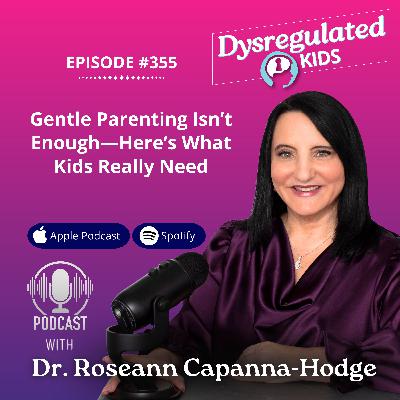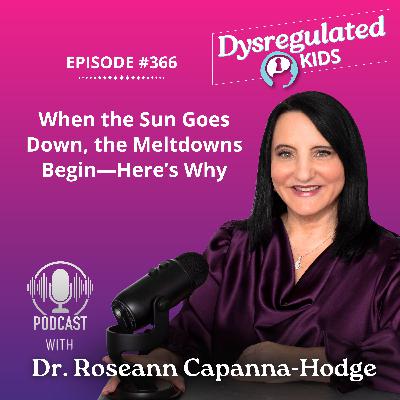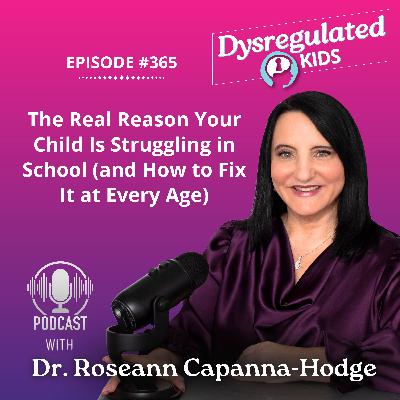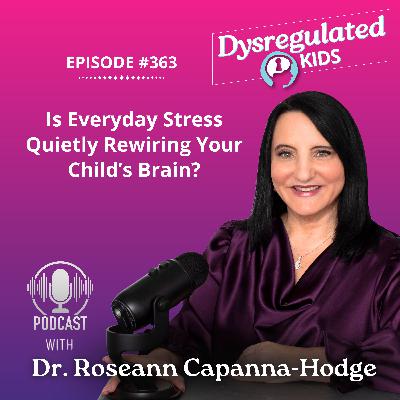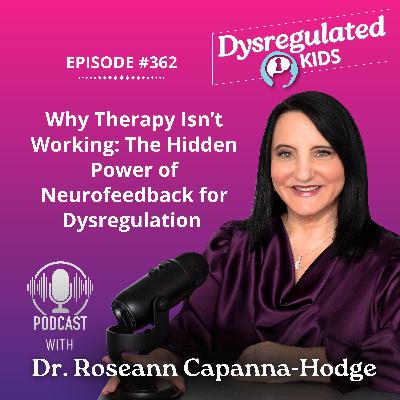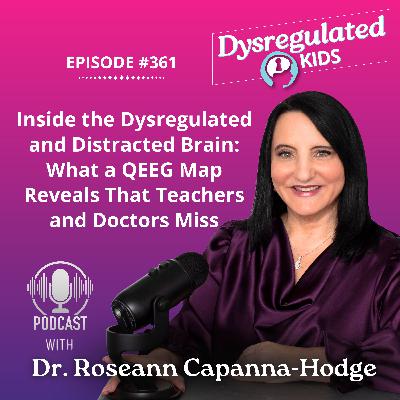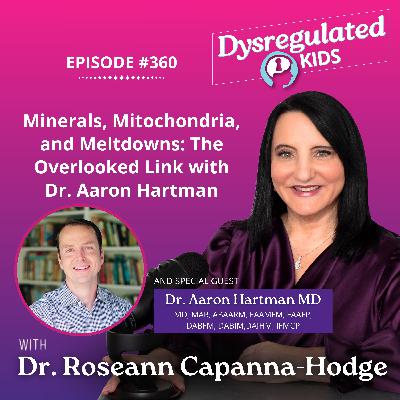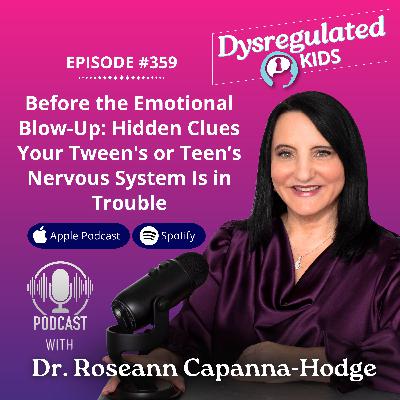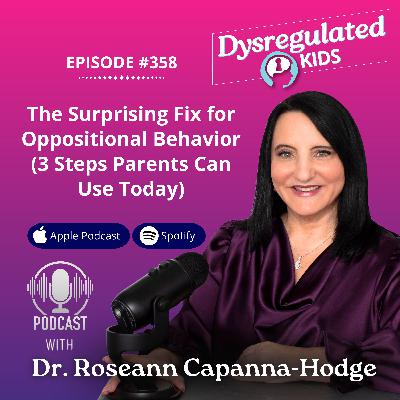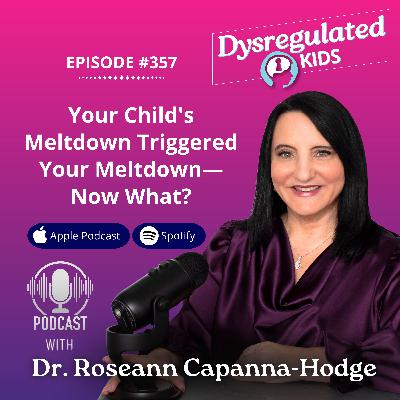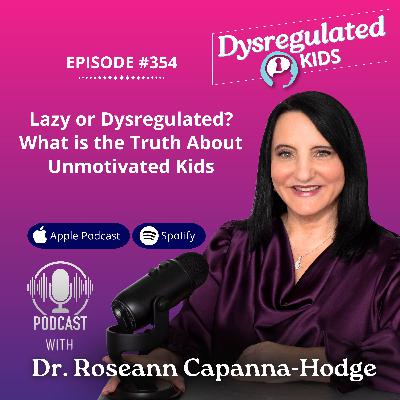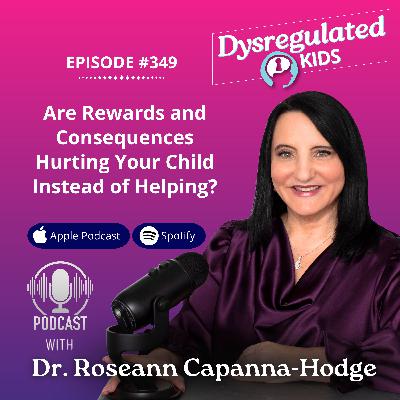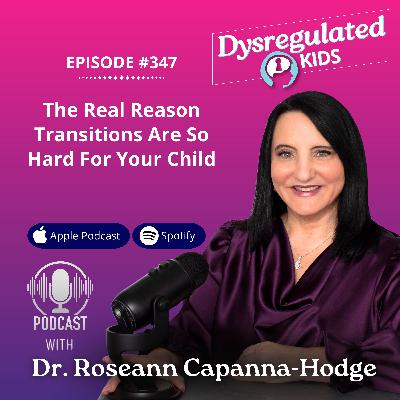355: Gentle Parenting Isn’t Enough—Here’s What Kids Really Need
Description
Parenting a child who constantly melts down—even when you’ve tried every gentle parenting tip out there—can leave you exhausted and doubting yourself.
You’re doing your best to be calm and validating, yet you still feel like you’re walking on eggshells. You’re not alone. The truth is, gentle parenting isn’t enough on its own—and understanding whycan completely change your family dynamic.
Let’s break down what gentle parenting gets right, what it misses, and how to help your child truly regulate and thrive. Learn more about why empathy without boundaries backfires, what “Regulate, Connect, Correct” really means, and how to shift from over-validation to true emotional safety.
Why Doesn’t Gentle Parenting Always Work?
Gentle parenting promotes empathy, validation, and connection instead of harsh punishment. That’s beautiful in theory—but many parents discover it’s not enough in real life.
Here’s why: Validation alone doesn’t calm a dysregulated brain.
- Kids may feel heard, but not necessarily safe.
- A dysregulated nervous system can’t learn, connect, or cooperate.
- Empathy without boundaries often fuels anxiety and chaos.
When kids stay stuck in big emotions, they become dependent on constant reassurance instead of learning self-regulation. That’s when parents start feeling drained and walking on eggshells.
🗣️ “Gentle parenting only works when it’s built on regulation first.” –Dr. Roseann
What Happens When We Over-Validate Our Kids’ Emotions?
Many parents think if they just validate enough, their child will calm down. But over-validation can actually make things worse.
I worked with a mom named Missy and her daughter, Emma. Missy tried so hard to ease Emma’s worries that she validated every fear—“We’ll get there on time,” “It’ll be okay,” “You don’t need to worry.”
But over time, Emma started needing constant reassurance just to feel calm. Her worries grew bigger, not smaller, and she began spiraling into obsessive thinking that bordered on compulsive behavior.
- Over-validation = more anxiety, not less.
- Kids learn emotions dominate, instead of learning to manage them.
- They need boundaries and co-regulation to feel truly safe.
The truth? Validation without tools or limits can create dependence. Boundaries are what anchor a child’s nervous system and reduce anxiety.
Yelling less and staying calm isn’t about being perfect—it’s about having the right tools.
Join the Dysregulation Insider VIP list and get your FREE Regulation Rescue Kit, designed to help you handle oppositional behaviors without losing it.
Download it now at www.drroseann.com/newsletter
How Do I Regulate First When I’m the One Who’s Overwhelmed?
Parenting a dysregulated child while you’re dysregulated too is a recipe for chaos. That’s why “Regulate First Parenting” starts with you.
Before reacting or rescuing, pause and breathe. That pause resets both your brain and your child’s.
Try this:
- Pause before you validate.
- Don’t rescue too fast.
- Set a calm, clear boundary.
Your calm becomes your child’s calm. This is co-regulation in action—the process of letting your child “borrow” your steadiness. When kids feel your grounded presence, their brain cues safety, and only then can they learn or cooperate.
Get the Quick Calm and begin your journey toward a calmer, more connected home.
What Are the Benefits of Regulating Before Connecting?
When parents regulate first, everything else flows better:
- Fewer meltdowns and faster recovery
- Stronger connection and trust
- Improved focus and follow-through
- True coping skills that last
Gentle parenting isn’t wrong—it just needs the missing piece. We have to parent with the nervous system in mind. Regulation creates the foundation where empathy, correction, and teaching can finally stick.
What Can I Do Right Now to Help My Child Regulate?
Start simple:
- Pause before you talk. Silence is powerful.
- Model deep breathing in the heat of the moment.
- Set small, predictable limits that lower anxiety.
- Replace rescuing with coaching. Help your child problem-solve instead of fixing everything for them.
Remember, you don’t have to choose between being gentle or firm. Boundaries plus co-regulation equal true security.
The bottomline? Gentle parenting opened the door to more compassion—but regulation-first parenting is the foundation that makes it all work. When you calm the brain first, everything follows: connection, cooperation, and lasting emotional growth.
You’re not failing. It’s not bad parenting—it’s a dysregulated brain. And when you learn to regulate first, you give your child the gift of calm, confidence, and resilience.
Tired of not knowing what’s really going on with your child?
The Solution Matcher gives you a personalized recommendation based on your child’s behavior, not just a label.
It’s free, takes just a few minutes, and shows you the best next step.
Go to www.drroseann.com/help
FAQs
How do I stay calm when my child is losing it?
Take one deep breath before responding. Your calm becomes their calm. Regulate yourself first—then connect with your child once both nervous systems are settled.
Is gentle parenting the same as permissive parenting?
No. Gentle parenting isn’t about saying yes to everything—it’s about setting firm, loving boundaries while staying calm and connected.
What if my child keeps needing reassurance?
That’s a sign of dysregulation, not defiance. Too much validation can increase anxiety. Focus on helping your child feel safe through calm presence and co-regulation instead.
Can gentle parenting work with strong-willed kids?
Absolutely. But you must regulate first, connect second, and correct last. When kids feel safe, cooperation follows naturally.
What’s one thing I can do right now to help my child calm down?
Pause before reacting. Ground yourself—slow your breathing, lower your tone, and soften your face. Then, offer a short, calm phrase like, “You’re safe. Let’s breathe together.”

